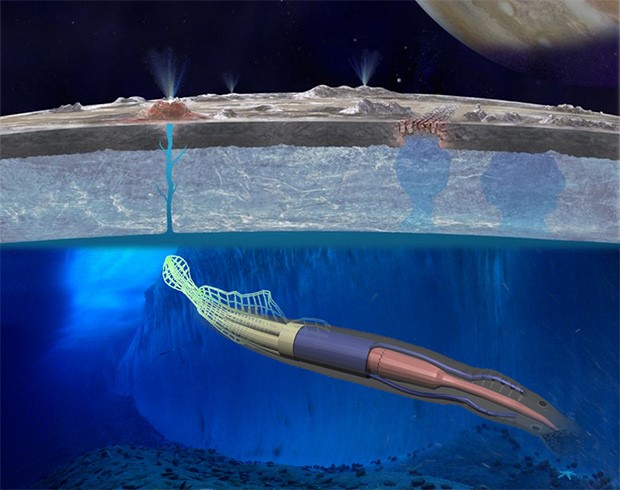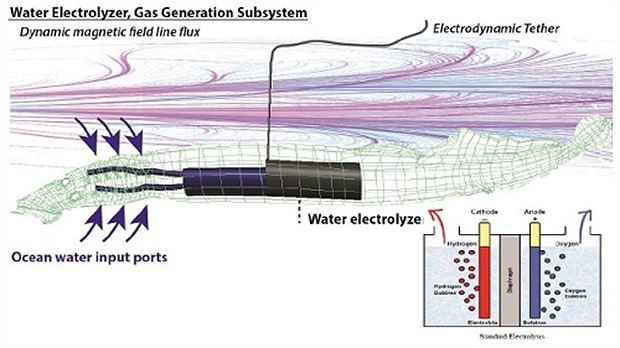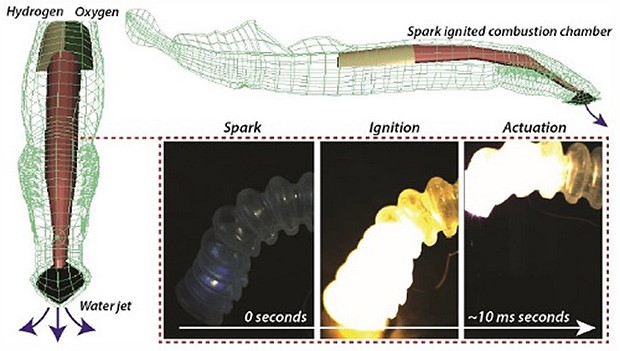
Seeking funds to design an avant-garde robot guised under the pretense of science? Simply pitch your idea to NASA, and if it’s practical enough, the space agency’s NAIC (NASA Innovative Advanced Concepts) program may award you the grant needed to fund your project. The latest recipient under the NAIC program is a “soft-robotic rover with electrodynamic power scavenging,” which is a fancy way of saying self-powered cyber eel with explosive propulsion.
The cyber eel concept is poised to explore the subterranean ocean of the Jovian moon Europa by generating electrical energy from the native magnetic fields and using it to generate the oxygen and hydrogen needed for propulsion; the project is being conducted at Cornell University by associate professor and former NASA Chief Technologist Mason Peck and Co-I Robert Shepherd.
The unnamed project currently stands at a “tech readiness level” one, or TRL 1, which is the preliminary designation for “basic principles observed and reported.” Peck and Shepherd hope the NAIC grant will elevate the project to TRL 2, or “technology concept and/or application formulated,” which is still ways to go from the TRL 9 that NASA requires for such missions.
Over the years, multiple sources have proposed a wide range of concepts for the explorations of Europa; the Cornell project is certainly not the first. Yet, regardless of application, all plans aiming to traverse Europa’s depths will be subject to the same limitation: the inability to procure solar energy. Not only is Jupiter’s proximity to the sun far enough to inhibit a steady amount of energy, but the ice-covered ocean further prevents the energy from reaching the robot. Nuclear energy, normally another viable contender, is not currently being explored by NASA.
Instead, the Cornell researchers are exploring an entirely new option that harvests energy from the powerful magnetic fields innately created by Jupiter. In theory, the dynamic magnetics fields will produce flux throughout the conductive water column within the underground ocean that the robot will be able to then harvests via an extendable electrodynamic tether. The resulting electricity would be sufficient to power all the robot’s systems.

Worth pointing out is that the ensuing electricity is not simply channeled into the propellers and other moving parts, but rather used to electrolyze water and separate the H2 from the O2 for safekeeping as on-demand fuel that can be mixed and ignited to propel the machine forward. The resulting explosion can be used to expand and contract the robot’s soft body, allowing it to “swim” forward like an octopus’ casual swimming, or it could directly fire the exhaust from the back end the way an octopus fires water when it sprints through water.

And just for good measure, the robot will feature electroluminescent skin to illuminate its surrounds, permitting scientists to see in the perpetual darkness expected to exist beneath Europa’s ice.
Advertisement
Learn more about Electronic Products Magazine





